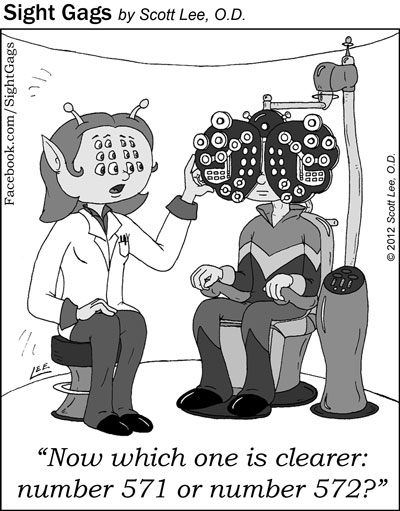Glaucoma is now an unavoidable subject for ODs—who, today, shoulder the burden of 85% of all comprehensive eye care services in the United States, putting us at the forefront of glaucoma detection.1-3
With the country’s population aging and the expected increase in rates of glaucoma in the next decade, it is important we embrace this role.4,5
More than two million prescriptions for prostaglandin analog eye drops are written by optometrists, proving that the profession is involved in managing these patients—and studies show that allowing optometrists to prescribe medication has a positive impact on patient outcomes.6,7
 |
I believe it is time for optometry to become the pillar in the management of glaucoma. With studies such as the OHTS, AGIS, EMGT and CIGTS providing guidelines, glaucoma special interest groups and continuing education, never before have doctors seeking guidance had so much access to knowledge.8-16
Our technology has improved too. We can now employ objective and repeatable tests, such as evoked potentials like ERGs and VEPs, ocular imaging techniques such as tomography and standardized methods to test field loss.
Today, we have a much clearer “north” to our clinical compass as we seek to manage this condition. Additionally, with the expected strain that the aging population will place on eye care and the expected increase in glaucoma prevalence, optometry may have no choice but to get involved in glaucoma management. We have the tools and the knowledge, now let’s get to work.
—Agustin Gonzalez, OD
Richardson, Texas
2. Gonzalez A. Quantitative analysis of ophthalmic drug prescription writing in optometry. Presented at AAO San Francisco. 2010.
3. The American Optometric Association. An action-oriented analysis of the state of the optometric profession. 2013.
4. World Health Organization. Glaucoma is second leading cause of blindness globally. www.who.int/bulletin/volumes/82/11/feature1104/en/. Accessed Feb 28, 2015.
5. Tielsch J, Sommer A, Katz J, et al. Racial variations in the prevalence of primary open-angle glaucoma: the Baltimore eye survey. JAMA. 1991;266(3):369-74.
6. Gonzalez A. A 3 year qualitative analysis of glaucoma ophthalmic prescription writing by optometrist. Presented at AAO Denver. 2012.
7. Azuara-Blanco A, Burr J, Thomas R, et al. The accuracy of accredited glaucoma optometrists in the diagnosis and treatment recommendation for glaucoma. Br J Ophthalmol. 2007;91(12):1639-43.
8. Kass M, Heuer D, Higginbotham E, et al. The Ocular Hypertension Treatment Study: a randomized trial determines that topical ocular hypotensive medication delays or prevents the onset of primary open-angle glaucoma. Arch Ophthalmol. 2002;120(6):701-13.
9. Musch D, Lichter P, Guire K, et al. The collaborative initial glaucoma treatment study—study design, methods, and baseline characteristics of enrolled patients. Ophthalmology. 1999;106:653-62.
10. Lichter P, Musch D, Gillespie B, et al; the CIGTS Study Group. Interim clinical outcomes in the collaborative initial glaucoma treatment study comparing initial treatment randomized to medications or surgery. Ophthalmology. 2001;108:1943-53.
11. Heijl A, Leske M, Bengtsson B, et al. Reduction of intraocular pressure and glaucoma progression: results from the Early Manifest Glaucoma Trial. Arch Ophthalmol. 2002 Oct;120(10):1268-79.
12. Grødum K, Heijl A, Bengtsson B. Risk of glaucoma in ocular hypertension with and without pseudoexfoliation. Ophthalmology. 2005 Mar;112(3):386-90.
13. Anderson D. Collaborative normal tension glaucoma study. Curr Opin Ophthalmol. 2003;14(2):86-90.
14. Ederer F, Gaasterland D, Sullivan E. The Advanced Glaucoma Intervention Study (AGIS): 1. Study design and methods and baseline characteristics of study patients. Control Clin Trials. 1994;15(4):299-325.
15. Gedde S, Schiffman J, Feuer W, et al. Three-year follow-up of the tube versus trabeculectomy study. Am J Ophthalmol. 2009;148(5):670-84.
16. Minckler D, Francis B, Hodapp E, et al. Aqueous shunts in glaucoma: a report by the American Academy of Ophthalmology. Ophthalmology. 2008;115(6):1089-98.

